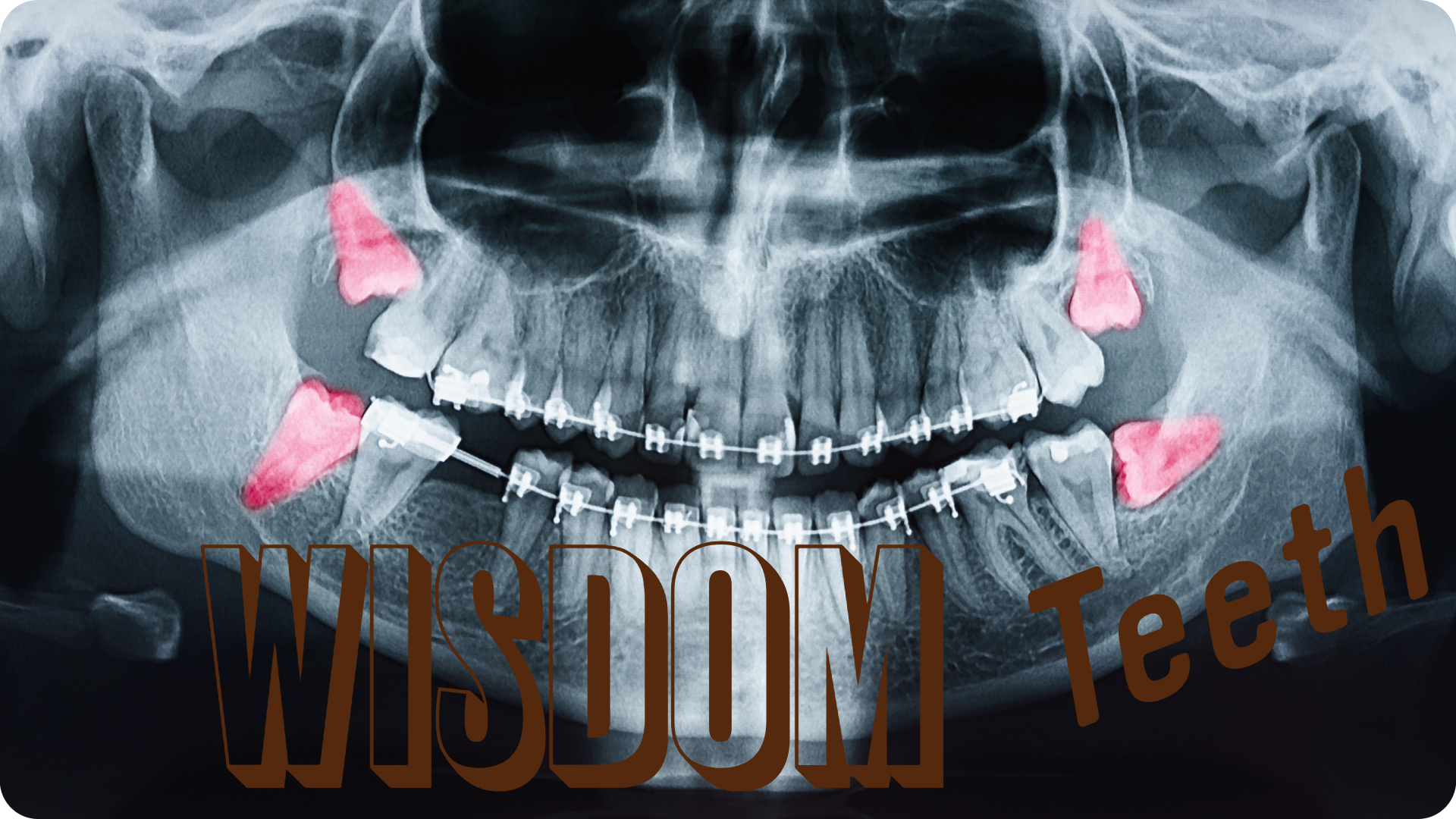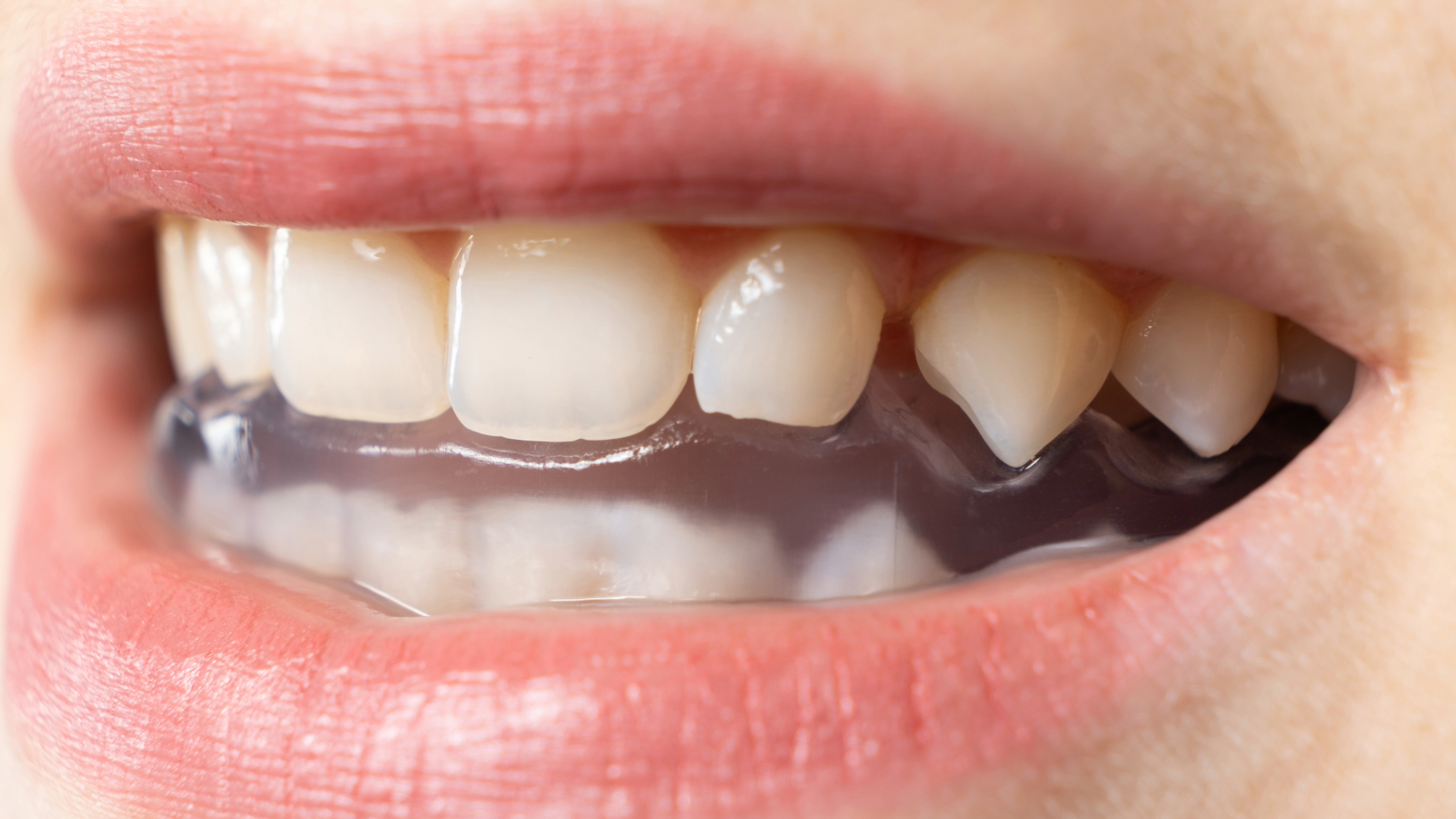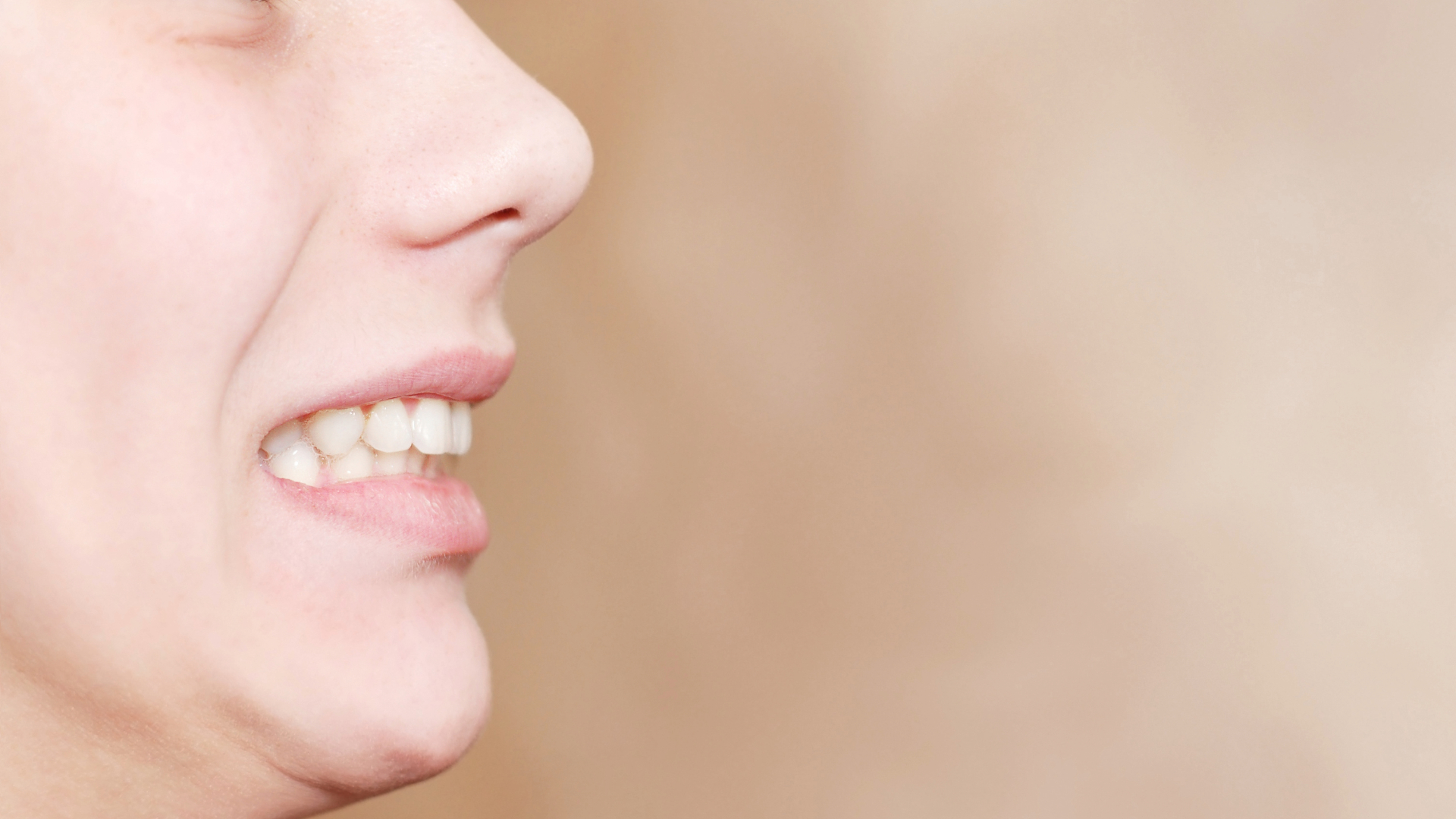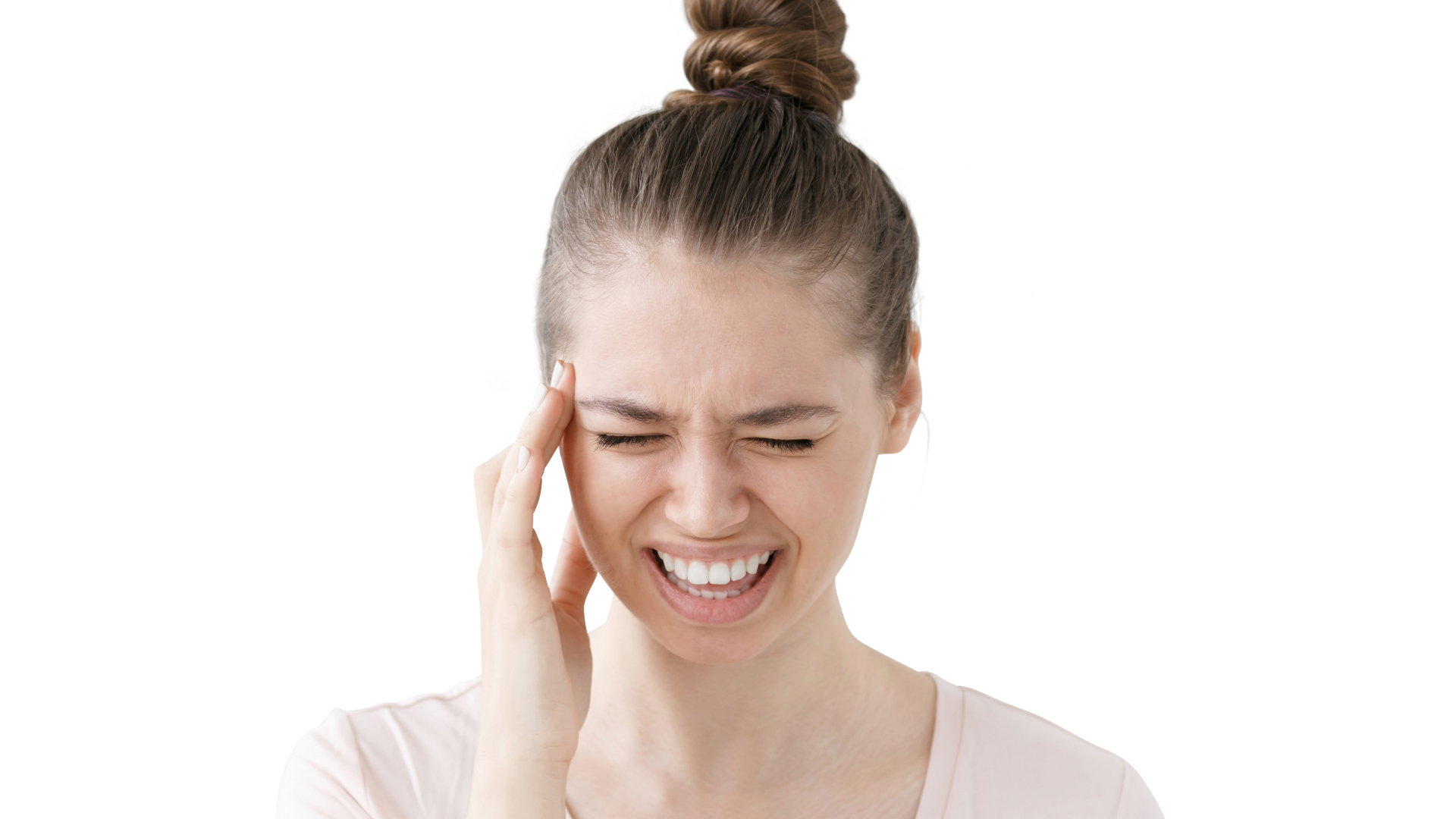
Third molars, or wisdom teeth, can really mess with your bite and gums. Migraines and headaches are among them. This article will go into the specifics of how wisdom teeth can trigger migraines and headaches, how the jaw and bite (occlusion) interact, and how headaches and dental health are related.
The Relationship Between Toothache and Migraine
The trigeminal nerve, one of the largest in the head, detects tooth and headache pain.
Trigeminal Nerve Connection
Headaches and toothaches are sensed by the trigeminal nerve, one of the largest nerves in the head. Because they share the same nerve pathway, dental pain can also radiate to the head. This close connection predisposes migraine attacks to be affected by dental problems.
Teeth grinding and clenching

Many people are not aware of their habit of teeth grinding (bruxism) or tooth clenching, especially at night. About 80% of people who grind or clench their teeth are not aware of it. Teeth grinding or clenching, putting excessive strain on the jaw muscles:
- Muscle aches
- Toothache
- Migraine attacks
can cause migraine attacks. Therefore, the use of night plates or measures to reduce grinding habits can alleviate migraine attacks.
Worn Teeth
If your teeth are worn down, your jaw may shift, which puts pressure on your neck and head muscles and increases your risk of migraines. Restoring proper jaw alignment and replacing missing teeth has been shown to alleviate migraine symptoms in certain patients.
Crooked Teeth
The jaw joint and the muscles around it can experience extra strain if teeth are crooked. Headaches and migraines can become more frequent as a result of this. After getting their misaligned teeth straightened, some people find that their migraine symptoms go away entirely.
Malocclusion and Migraine

Tooth misalignment in the upper and lower jaws is a malocclusion. Teeth at wrong angles, crooked teeth, or missing teeth can cause migraines.
The Impact of a Bad Closing
A bad bite (malocclusion) is when the teeth do not meet correctly in the upper and lower jaw. This condition, caused by teeth at wrong angles, crooked teeth or missing teeth, can trigger migraine attacks. When the jaw and facial muscles are overloaded, pain can radiate to the head.
The Role of the Dentist
Dentists should perform a comprehensive assessment, not only in terms of caries or gum health but also in terms of closure and jaw position. Treatment options include:
- A simple closing adjustment
- Use of night plates
- Jaw reposition device
These treatments can be effective in reducing or completely preventing migraine attacks.
Wisdom Teeth and Headache/Migraine

Wisdom teeth are the third molars that typically emerge between the ages of 17 and 25. These teeth can remain impacted if there is not enough space in the mouth or if the space for the tooth to erupt is narrow. Impacted or partially impacted wisdom teeth:
- Damage to side teeth
- Risk of decay due to accumulation of food residues
- Periodontal (gum) problems can lead to problems such as
Embedded Wisdom Teeth
Impacted wisdom teeth can induce a persistent sensation of pressure and pain in the jaw and cranium. This pressure may be so intense that it causes migraines. Because there is not enough space, teeth can get stuck and threaten neighboring teeth.
Wrong Position
Some wisdom teeth try to erupt horizontally or at an angle. This creates tension in the jaw joint and muscles, which can trigger headaches. Constant muscle tension often causes migraine-like pain.
Risk of infection
Partially erupted wisdom teeth can form a pocket in the gums. Bacteria that accumulate in this pocket can lead to infection, and severe headaches may accompany infection. The symptoms include;
- Severe pain
- Swelling
- Lockjaw (locking the jaw)
Bite and Jaw Position
When the wisdom teeth come in at the wrong time, it might alter the alignment of your jaw and lead to bites. When the jaw joint moves out of place, it puts strain on the surrounding muscles and ear canal, which can lead to a variety of painful symptoms, including headaches and earaches.
Symptoms Related to Wisdom Teeth
When wisdom teeth do not erupt properly or remain impacted, several symptoms can arise.
Common Symptoms
- Pressure and pain in the posterior region of the jaw
- Irritated gums
- Pus or swelling as a result of infection
- Bad breath or bad taste in the mouth
- Difficulty opening the mouth (jaw locking)
Migraine and Headaches
Migraines and headaches are frequently reported in association with wisdom teeth. Following the extraction of the wisdom teeth, some patients report that their headaches and migraine attacks either drastically decrease or stop altogether.
Diagnosis and Treatment of Wisdom Teeth
If there are no symptoms associated with wisdom teeth, routine observation might be enough.
Tracking or Removing
Periodic monitoring might be enough if wisdom teeth do not cause any symptoms. However, because these teeth are likely to cause issues later, the majority of dentists advise having them extracted early.
Home Remedies
As a quick fix, you can try applying a hot/cold compress or placing cloves on the painful tooth. Removal of the wisdom teeth or surgical intervention is typically necessary for more severe cases. Below is a table summarizing the most commonly recommended home remedies, their descriptions, application methods, and supporting evidence:
|
Remedy |
Description |
Application Method |
Supporting Evidence/Notes |
|
Saltwater Rinse |
Natural disinfectant, reduces bacteria, prevents tooth decay, and reduces inflammation. |
Dissolve 1/2 to 1 tsp salt in a glass of warm water, swish for 30 seconds, spit out, repeat 2-3 times/day. |
2021 study shows anti-inflammatory effects comparable to 0.12% chlorhexidine ; 2017 study supports efficacy. |
|
Ice Pack |
Reduces inflammation, numbs pain, and decreases swelling. |
Apply ice pack (wrapped in cloth) to jaw for 15-20 minutes, with 15-minute breaks, up to 48 hours post-onset. |
Commonly used for swelling reduction, supported by general cold therapy research. |
|
Clove Oil |
Contains eugenol, provides anesthetic and antibacterial effects, may ease pain. |
Dilute a few drops with carrier oil (e.g., coconut oil), apply to affected area with cotton swab, use cautiously. |
Shows promise as pain reliever, but can cause irritation; consult healthcare provider . |
Treatment Dependency
Wisdom tooth treatment depends entirely on the symptoms and complications that occur. If there are no problems, the dentist may recommend routine follow-up, but if there is severe pain and risk of infection extraction is usually the most permanent solution.
Migraine Definitions and Treatment
Migraine is a type of throbbing headache that often starts unilaterally. The following symptoms may accompany these aches, which can persist anywhere from four to seventy-two hours and are typically worsened by movement:
Nausea
Dizziness
Sensitivity to light or sound
Types of Migraine
- Migraine with aura (Classic): Visual or sensory symptoms (flashes of light, tingling, visual field changes) may occur before or during the headache.
- Migraine without aura: The most common type of migraine; severe pain without aura.
- Episodic or Chronic Migraine: The frequency and severity of attacks may vary from person to person, sometimes becoming chronic and recurring more frequently.
Treatment Options
Medication for migraines can take many forms, including over-the-counter pain relievers, triptans, and even preventative measures. Furthermore, if you experience migraines and think they might be caused by your wisdom teeth, it is best to see a dentist.
- Home Remedies: Drink plenty of fluids, dark and quiet environment, hot/cold compresses.
- Surgical Options: Extraction of wisdom teeth or operations to correct the jaw position may be required.
Conclusion
Improper erupting or retained wisdom teeth are not just a pain in the mouth; they can also bring on migraines and other headache-inducing episodes. In particular, factors such as poor bite (malocclusion), teeth grinding, and crooked teeth can increase the frequency and severity of migraine attacks.
It is wise to see a dentist if you are having migraines and think there might be a problem with your wisdom teeth. They can determine where the pain is coming from and how to fix it.
